Kimchi jjigae (김치찌개) is one of Korea’s most beloved comfort foods – for good reason! It’s a bubbling, spicy stew made with well-fermented kimchi as its star ingredient. It’s often served piping hot alongside a bowl of rice and a few simple side dishes.
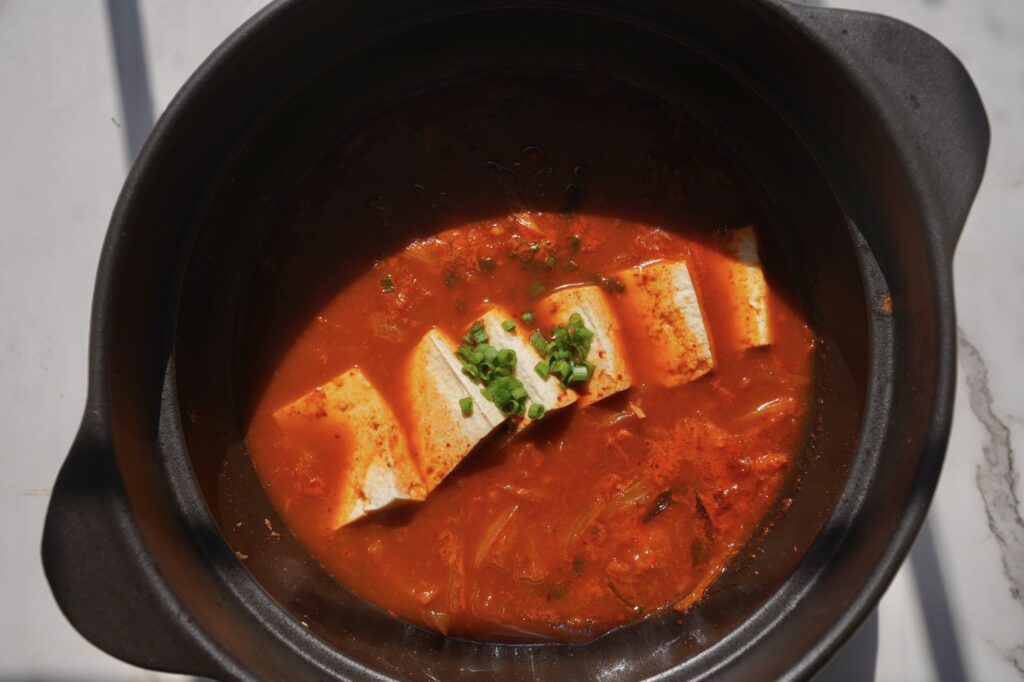
What makes kimchi jjigae so special is its bold, tangy flavor that deepens the longer the kimchi has aged. In fact, this stew is one of the best ways to use overripe kimchi that might be too strong to enjoy on its own.
Jeff and I recently restocked on our homemade kimchi and even though I typically like to wait until the kimchi is at least a few months old, I couldn’t wait to make kimchi jjigae! I’m currently 9 months pregnant so when the food cravings hit, I have to listen!
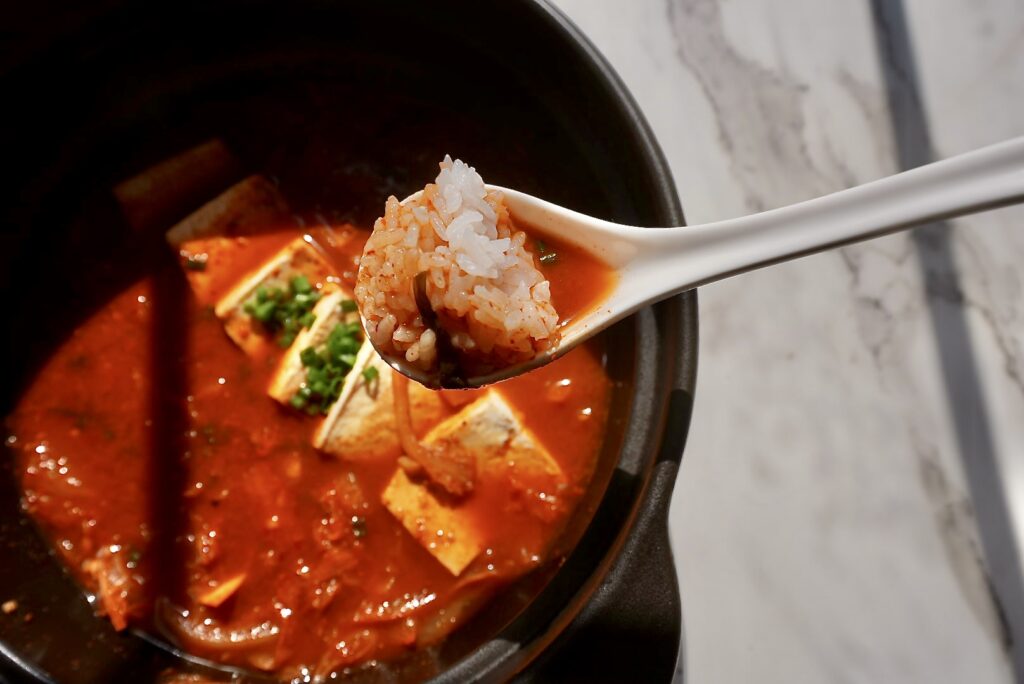
The stew typically includes ingredients like pork (usually pork belly or shoulder), tofu, scallions, onions, and sometimes mushrooms. Some variations use canned tuna instead of pork. The broth is often enhanced with gochugaru (Korean red chili flakes), garlic, and a bit of anchovy stock or dashi to round out the umami.
The result is a rich, hearty, and slightly spicy dish that warms you from the inside out (especially comforting in colder weather… or, again, if you’re 9 months pregnant like me and have weird cravings for hot stew in the middle of July).
Kimchi jjigae is a dish steeped in everyday tradition. It’s not fancy or complicated, but it’s so incredibly satisfying to eat. I love making it in large batches and reheating it throughout the week. It’s one of those leftovers that doesn’t diminish in flavor as the days go on.
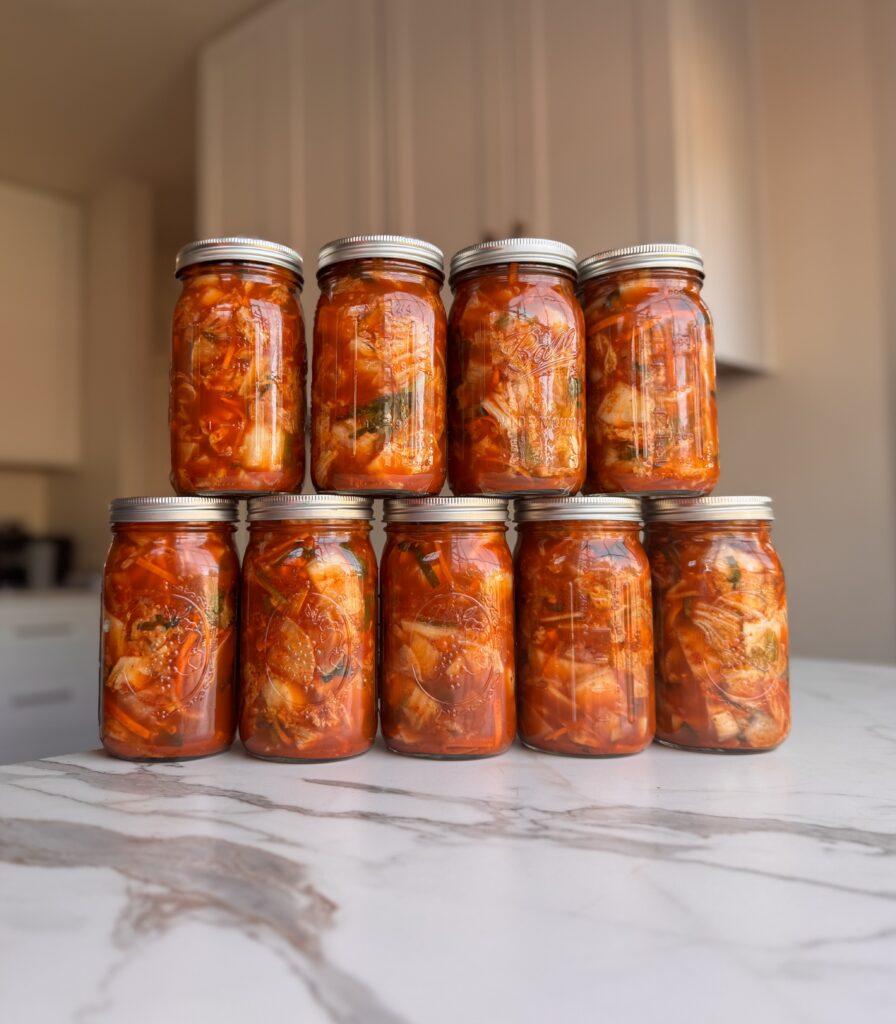
About Kimchi:
Kimchi is a traditional Korean dish made by fermenting vegetables (most commonly napa cabbage) with a flavorful mix of chili flakes (known as gochugaru), garlic, ginger, and sometimes other seasonings. The result is a bold, tangy, spicy dish full of umami, thanks to the natural fermentation process.
While cabbage kimchi is the most common, there are hundreds of regional and seasonal varieties across Korea, each with its own flavor and texture.
Although kimchi originated in Korea, it’s also widely enjoyed in Japan. I grew up eating it all the time, and it was a staple in our fridge. In Japan, you’ll find milder or slightly sweeter versions of kimchi sold in grocery stores and served at restaurants, often adapted to suit Japanese palates.
I usually make a large batch of kimchi to store every 3-6 months. If you’re interested, my recipe is below – but you can also find kimchi at most grocery stores nowadays, including Costco and Walmart. For the best flavor, look for a Korean brand!
Kimchi Jjigae Ingredients:
- Kimchi: The star ingredient, providing bold, spicy, and tangy flavor, especially when well-fermented.
- Tofu: Adds protein and a neutral flavor that balances the spice. I recommend using extra firm tofu!
- Kimchi Brine: Intensifies the kimchi flavor in the broth with its salty, sour, umami-rich punch.
- Garlic: Brings aromatic depth and enhances the overall savory profile.
- Gochujang (Korean Chili Paste): Adds spice, sweetness, and a thick, slightly smoky richness.
- Gochugaru (Korean Chili Flakes): Boosts heat and gives the broth its signature red color.
- Onion: Provides sweetness and body as it softens into the stew. Depending on if the kimchi I’m using already has onions, I may omit this and throw in something like mushrooms instead.
- Sugar: Balances out the acidity and heat with a hint of sweetness.
- Soy Sauce: Adds salty umami and depth to the broth.
- Sesame Oil: A nutty finish that rounds out the flavors.
- Anchovy Stock (or Dashi): The base of the soup, rich in umami and traditional in Korean cooking.
- Green Onions: Added at the end for freshness, brightness, and a bit of bite.
What is Gochujang?
Gochujang adds an incredible depth of flavor with its signature blend of heat, sweetness, and umami. Made from red chili peppers, fermented soybeans, glutinous rice, and salt, gochujang brings a spicy kick. This thick, vibrant red paste has a unique fermentation process that gives it a slight tang and an earthy quality, similar to that of miso or soy sauce but with a touch of sweetness from the glutinous rice.
In Korean cooking, gochujang is a beloved staple, used in everything from stews and marinades to dipping sauces. Its versatility has made it popular in fusion dishes, adding a unique Korean twist and depth to many cuisines.

Easy Kimchi Jjigae (Korean Kimchi Stew)
- Total Time: 25 minutes
Description
Kimchi jjigae is a bold, comforting Korean stew made with aged kimchi, tofu, and a spicy, umami-rich broth that’s perfect served bubbling hot with rice.
My recipe is meat-less, however, you are totally welcome to add meat! I recommend pork belly or tuna. Just add it and cook it right before sautéing the onions in the first step
Ingredients
- 1 cup kimchi
- 3 cloves garlic, minced
- 1/3 small onion, sliced
- 1/3 cup kimchi brine
- 1 3/4 cups anchovy stock (substitute dashi)
- 1 tbsp soy sauce
- 1 tbsp sugar
- 1 tbsp gochujang (Korean chili paste)
- 1/2 tbsp gochugaru (Korean chili flakes)
- 1 tsp toasted sesame oil
- 8–9 oz extra-firm tofu, sliced into 1/2-inch thick squares
- Optional garnishes: roasted sesame seeds and green onions, thinly sliced
Instructions
- In a medium pot over medium heat, add a small drizzle of oil. Add the minced garlic and sliced onion and sauté until fragrant, about 1-2 minutes.
- Add the kimchi and stir-fry for 2-3 minutes.
- Pour in the kimchi brine, anchovy stock (or dashi), soy sauce, and sugar. Add in the gochujang and gochugaru and stir until well combined.
- Bring the stew to a boil, then reduce heat and let it simmer for 10 minutes, allowing the flavors to develop.
- Drizzle with the toasted sesame oil and gently add the tofu cubes. Simmer for another 5 minutes, warming the tofu without breaking it apart.
- Sprinkle with roasted sesame seeds and green onions. Serve hot with steamed rice.
- Prep Time: 5 minutes
- Cook Time: 20 minutes
Nutrition
- Serving Size: 2

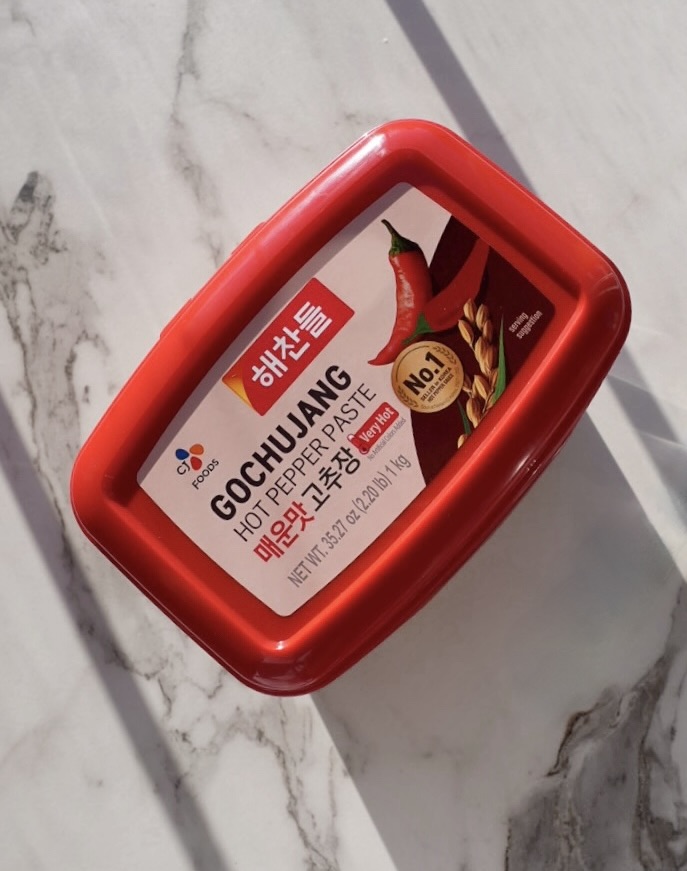
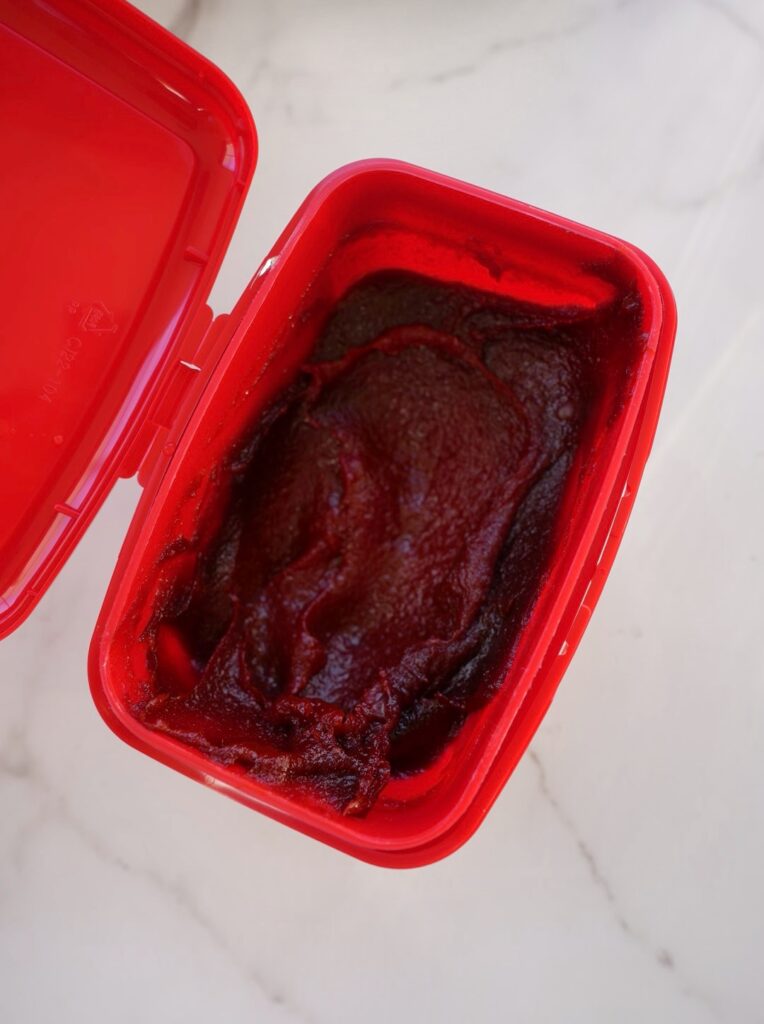
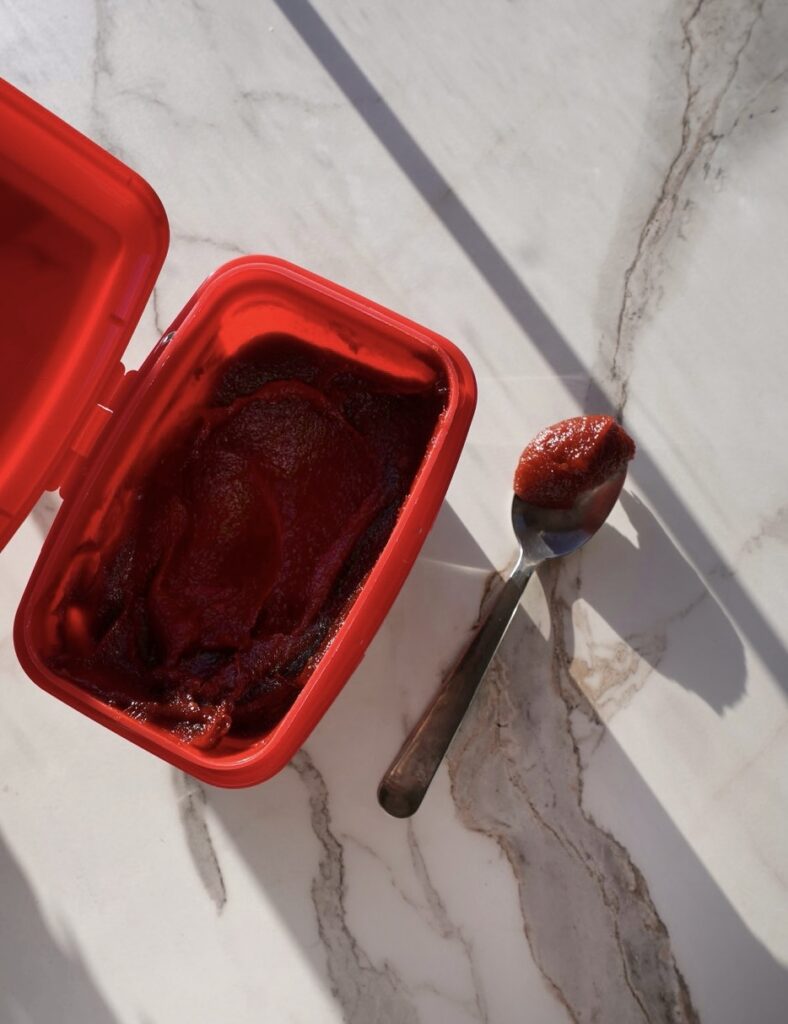



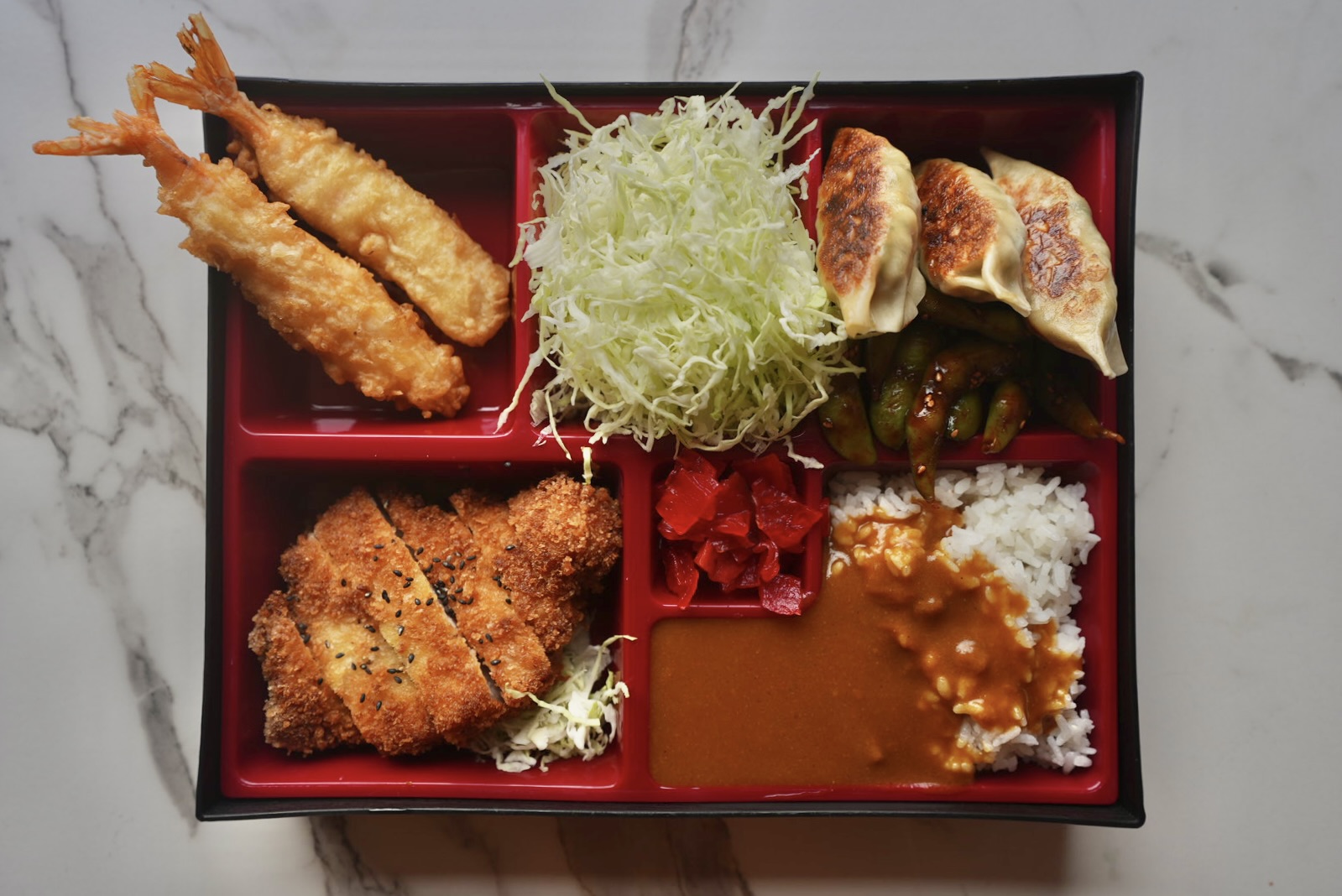
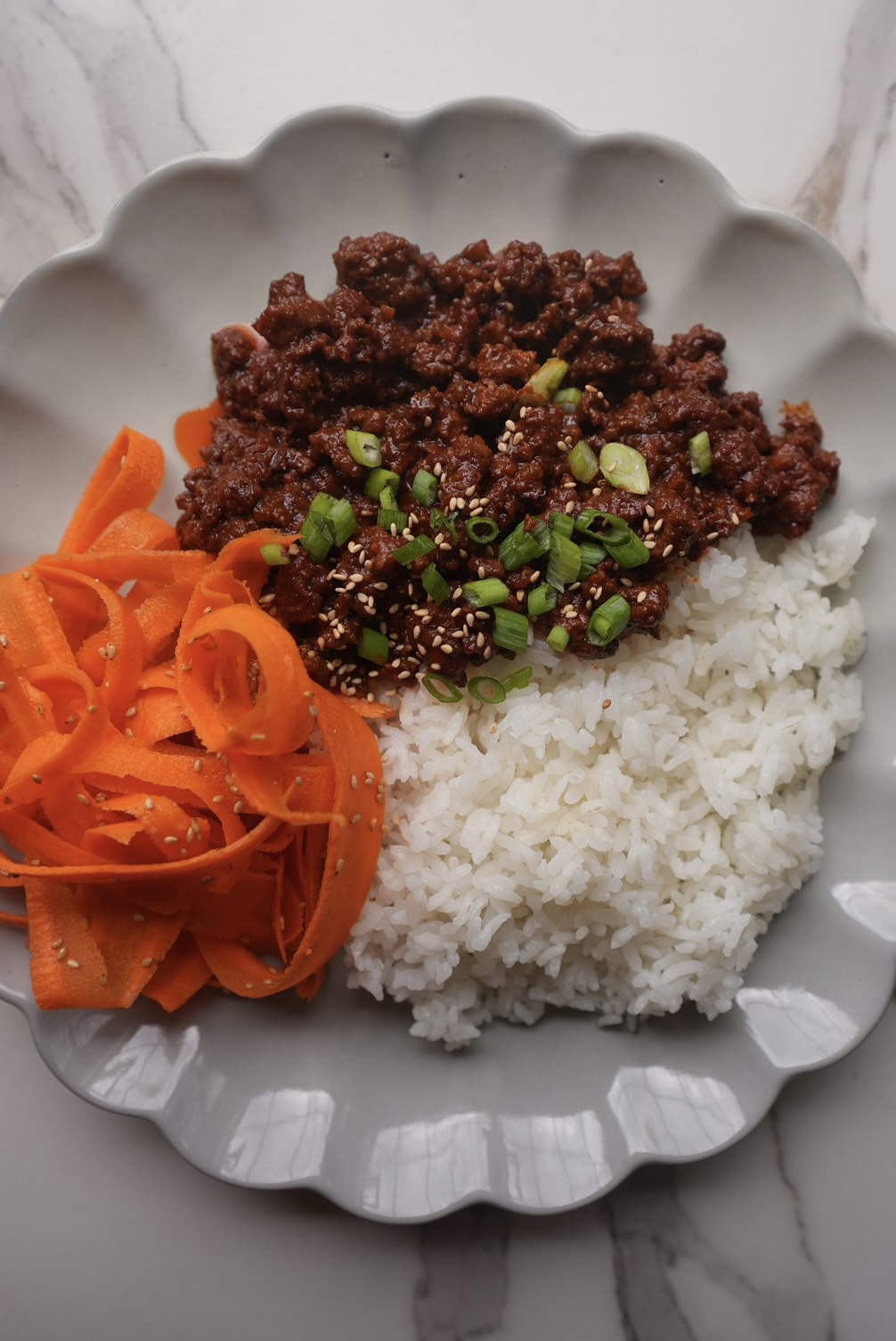
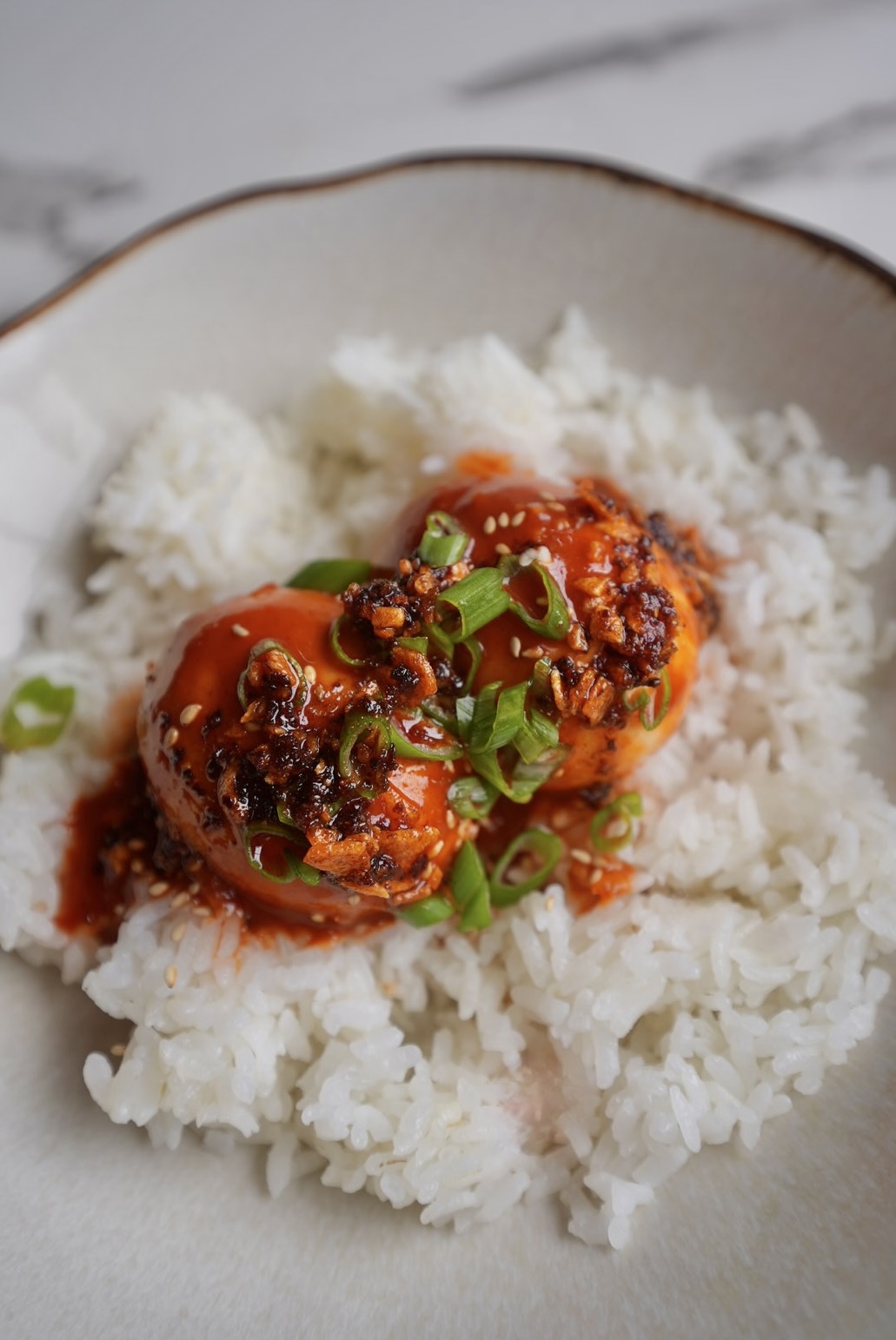
So easy and comforting.
Thank you, Jessica!
OMG I loved this sooo much, i substituted the anchovy broth for diluted fish sauce, so maybe it doesn’t taste like the original but its finee (i think)
I bet it was amazing! That sounds like a great substitute to still give the salty, fish flavor. Thanks for your review, Anna!